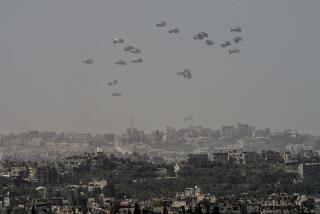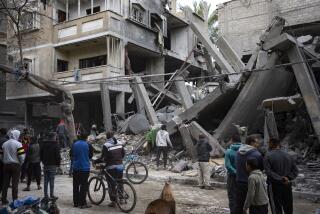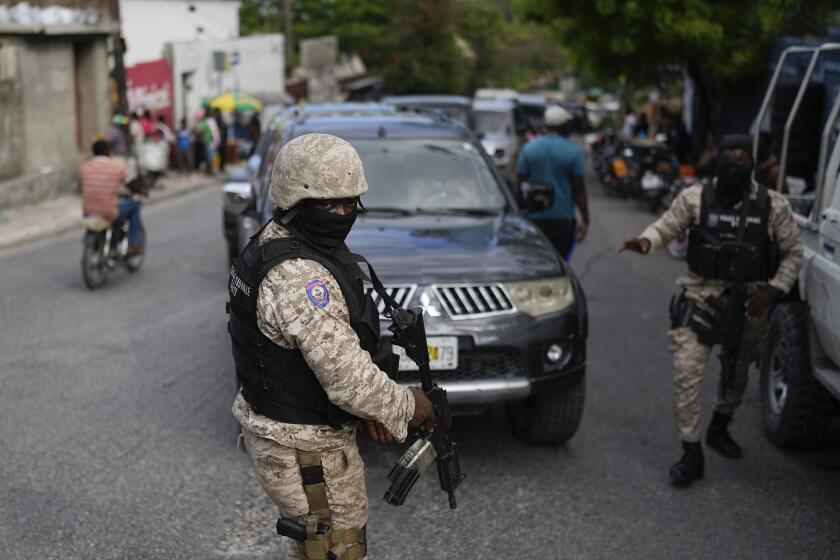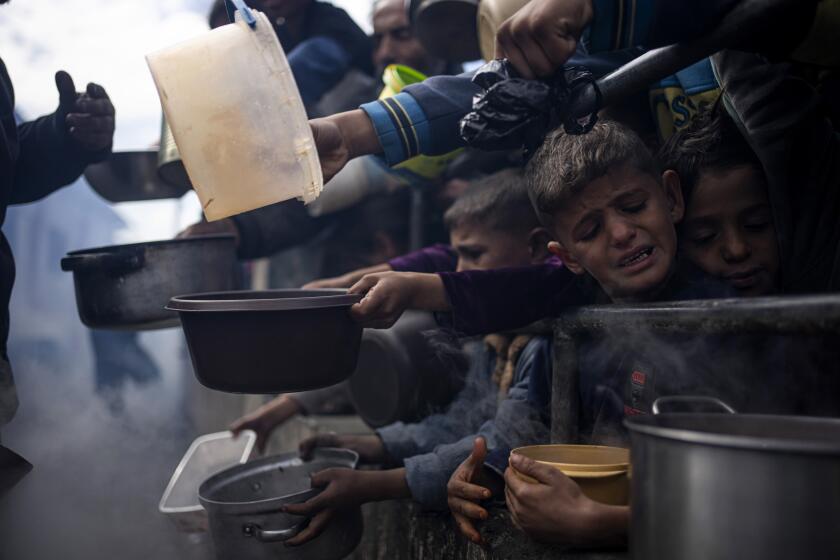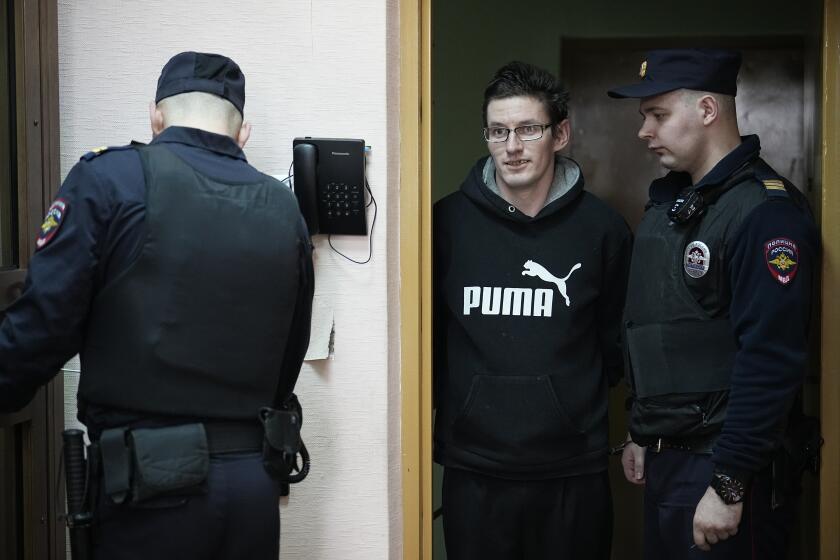In Egypt, mosques turn into hospitals; death toll climbs to 281
CAIRO -- Mosques turned into makeshift hospitals Wednesday as protesters injured in a deadly crackdown in Cairo were brought in, blood staining the prayer carpets.
Dr. Abeer Ali, a surgeon, moved through the crowds gathered at one small mosque, treating bullet wounds as bursts of gunfire could be heard not far away.
She paused briefly to charge her phone in the one electrical socket near the imam’s spot, so she could call her mother and let her know she was safe. Many others crowded around the same electrical outlet throughout the day to make similar calls as their phone batteries died.
Outside, the streets also looked like hospital corridors as protesters donned surgical masks to help protect themselves against the constant barrage of tear gas thrown their way by security forces trying to break up supporters of ousted President Mohamed Morsi camped out at Rabaa al Adawiya Square, about 300 yards away.
Thousands of people had converged on the edges of the square Wednesday morning after they began hearing news of the raid there and at another sit-in at Cairo University.
The crackdown set off running street battles that spread across the nation. At least 281 people were killed, including 43 police officers, according to the Health Ministry.
Shops and businesses around Rabaa square were shuttered. The only business going was a small convenience stand, which was selling cola and chips. Protesters snacked on the chips and poured the cola over their eyes to wash away the tear gas.
Among the marchers who walked toward Rabaa square, only to be stopped by the tear gas and gunfire, there were almost no Morsi placards or Egyptian flags, which had been plastered all over the two encampments.
Now, it seemed, support for Morsi had been overwhelmed by anger at the military.
“Today, the issue is bigger than Morsi and whether he is going to return to his presidency or not,” said Alaa Deen Ahmad, an accountant and swimming coach who had been there since the morning.
Residents in the surrounding apartment buildings who occasionally peeked out at the protesters below also became targets of their anger. The demonstrators yelled and cursed them and occasionally threw stones that fell short and hit other protesters.
As night fell, and a 7 p.m. curfew took effect, the rage was still raw. Young men and boys collected empty glass bottles from people and began making a small cache of Molotov cocktails. Occasionally, in the distance, one such cocktail flew through the air, interrupting the darkness.
Within hours, the streets had turned almost post-apocalyptic. Burning buses and government vehicles and mini-bonfires of tires and garbage dotted the streets. Farther away, the neighborhood watch groups surfaced: men armed with sticks and knives guarding their streets.
“We don’t know what we’re going to do. We wanted to join their sit-in, but they cut the road off,” said Yasmin Maher, sitting on a curb with another woman. She had been there since noon and was exhausted.
She shrugged several times, reflecting the uncertainty of the moment. “We don’t know, we still don’t know what we’re going to do,” she said.
For Ahmad, there was no such uncertainty.
“There is no other choice, we are staying here,” he said. “But we’re not going to make tents, because it will be hit-and-run all night. What else are we going to do, leave? Then all those who died will have died in vain.”
Above them, a military helicopter made several passes. People watched it and occasionally threw up peace signs.
But that might not last, Ahmad said.
“After what happened today, it won’t remain peaceful,” he predicted.
ALSO:
Hopes fade for 18 sailors after blast on Indian sub
‘Extreme abuses’ drive Doctors Without Borders out of Somalia
9 of the most memorable images from Egypt’s explosive summer
Twitter: @rajaabdulrahim
More to Read
Start your day right
Sign up for Essential California for news, features and recommendations from the L.A. Times and beyond in your inbox six days a week.
You may occasionally receive promotional content from the Los Angeles Times.
